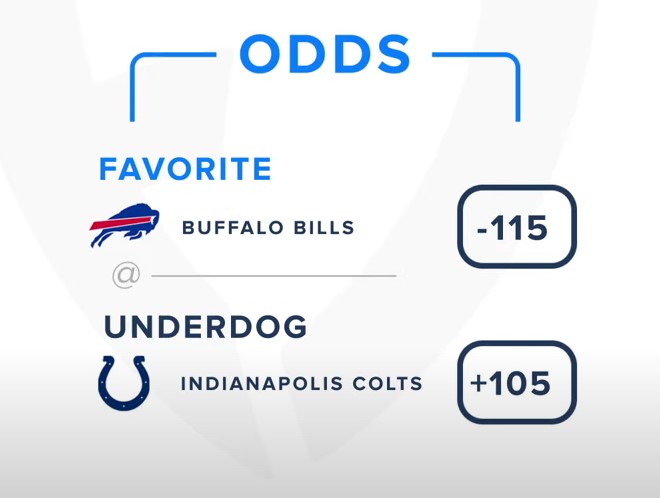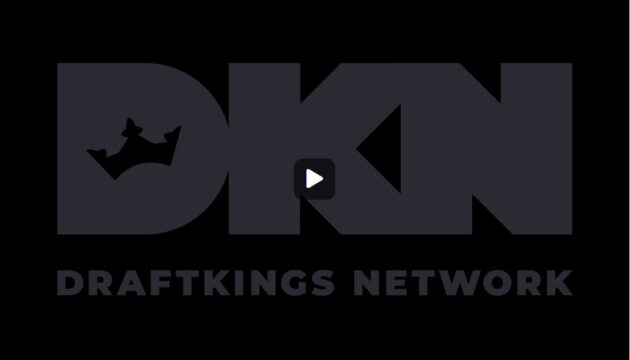Hey! Want to understand how to read betting odds? Here we explore the fundamentals of betting odds in New Jersey’s online sports betting scene, breaking down the different odds formats – American, fractional, and decimal. Our easy to grasp guide provides practical examples to help you understand how to read these odds and make informed wagers online. Additionally, this article touches on the distinction between betting odds and money lines, helping (we want to believe) you build a winning betting strategy to beat the bookie. Let’s go!
Reading and understanding betting odds
Understanding betting odds is crucial for anyone looking to participate in sports betting. They indicate the probability of an event happening and the potential payout you could receive on a successful bet.
Here’s how to read the three primary types of betting odds:
- American Odds (Moneyline Odds):
- Positive (+) Moneyline Odd: Indicates how much profit you’d make on a $100 bet. For instance, +200 means you’d make $200 profit on a $100 bet, returning $300 in total.
- Negative (-) Moneyline Odd: Indicates how much you need to bet to make $100 profit. For instance, -200 means you’d need to bet $200 to make $100 profit, returning $300 in total.
- Decimal Odds:
- This format shows the total payout from a $1 bet, including your stake. For instance, 3.00 means you’d get $3 back in total from a $1 bet.
- Fractional Odds:
- Displayed as a fraction, these odds indicate the potential profit relative to a $1 stake. For instance, 2/1 (read as “two to one”) means you’d make a $2 profit on a $1 bet, returning $3 in total.
Now, regarding the terms “odds” and “money lines”, they are related but have distinct meanings:
- Odds: This is a general term used across many forms of gambling, and in sports betting, it refers to the ratio of the amount (profit) won to the stake. Odds are a reflection of the likelihood of a certain outcome and are presented in American, Decimal, or Fractional formats, as explained above.
- Money Line: This term is primarily used in American sports betting to denote a type of bet where you are wagering on which team or individual will win a game or event outright. Moneyline odds are represented in American odds format (e.g., +200 or -200).
The difference lies in the specificity; “odds” refers to the mathematical likelihood of an event happening while “money line” refers to a specific type of bet. Every moneyline bet has associated odds, but not all odds are related to a moneyline bet as odds can also be related to other types of bets like point spreads, over/under, etc.
American Odds
Predominantly used in the United States, American odds, often referred to as moneyline odds, are expressed as either positive or negative numbers. A positive figure indicates the amount one can win on a $100 bet, while a negative figure denotes how much one needs to wager to win $100.
Example: If on BetMGM or other NJ sportsbook app, the New York Knicks are listed with odds of +150, a successful $100 bet on them would yield a return of $150. Conversely, if the Brooklyn Nets have odds of -200, you would need to bet $200 to win $100.
Fractional Odds
Fractional odds, a common sight in the UK and Ireland, showcase the potential profit relative to the stake.
Example: On Bet365, if the odds for a match are displayed as 3/1, it signifies that you stand to win $3 for every $1 wagered.
Decimal Odds
Favored in Europe, Canada, and Australia, decimal odds depict the total return from a $1 bet.
Example: Should the decimal odds on DraftKings for a baseball match be 1.50, a $1 bet could potentially bring a total return of $1.50.
In-Play Betting Odds & Sports Markets
In-play betting, or live betting, introduces a dynamic facet to sports betting, allowing bets to be placed as the game unfolds. The odds in live betting are in a constant state of flux, mirroring the real-time progress of the game. New Jersey sportsbooks provide live odds on a vast spectrum of sports, with platforms like BetMGM, Borgata, and bet365 Sports offering dedicated sections for live betting.
A firm grasp of betting odds is further enriched by understanding the array of betting markets available. Here’s a rundown:
- Moneyline: A straightforward bet on the game’s victor.
- Point Spread: Betting on the margin of victory.
- Over/Under: Betting on whether a certain statistic in a game will be over or under a specified total.
- Prop Bets: Betting on specific aspects of a game, not directly related to the outcome.
- Futures: Bets placed on future events.
Platforms like BetRivers and Bet365 have detailed guides on interpreting various types of odds and betting markets, providing a smoother transition for novice bettors into the realm of sports betting.
From high-stakes events like the Super Bowl and March Madness to everyday games across different sports, the opportunities for placing bets online in NJ are boundless. The legal framework also permits betting on both professional and collegiate sports events, albeit with a restriction on betting on collegiate events occurring within the state.
Acquainting yourself with the dynamics of odds and various betting markets will not only enrich your understanding but also heighten the excitement of each wager placed. Mastering the art of reading odds in our opinion is your stepping stone to becoming a savvy bettor in the Garden State.
How are American Odds Calculated in NFL Betting?
Example: If the New York Giants are listed at -150 on a betting platform, what does this signify in terms of the amount needed to be wagered to win $100?
How is the Point Spread Interpreted in NBA Betting?
Example: In a game between the Los Angeles Lakers and the Miami Heat, if the Lakers are given a point spread of -3.5, what does this imply for the margin of victory needed for a successful bet on the Lakers?
How do Decimal Odds Work in UFC Betting?
Example: If a UFC fighter has decimal odds of 2.00 listed on a betting platform, what would be the total return on a $50 bet should the fighter win?
How are Over/Under Bets Calculated in an NFL game?
Example: If the over/under for total points in an NFL game is set at 45.5, and the game ends with a score of 24-21, would the over or under bet be successful?
How do Prop Bets Work in NBA Betting?
Example: In an NBA game, if a prop bet is offered on a particular player scoring over or under 25.5 points in the game, how would a bet be placed and what needs to happen for the bet to be successful?
bet365 NJ Bonus Code Nov 2025: Use USB365 | Bet $5 & Get $200 Or $1,000 Deposit Match + Up to 500 Spins (Casino Bonus)
Betting exchanges and peer-to-peer betting platforms have revolutionized the way punters place bets, by allowing them to bet against each other rather than against a sportsbook oddsmaker. This model facilitates a dynamic marketplace where odds are dictated more by supply and demand, often leading to better odds compared to traditional bookmaker offerings. Here’s a breakdown of how betting odds function in these platforms and how to use them, with examples from horse racing, tennis, and NBA.
- Betting Exchanges:
- Odds Formation: The odds on betting exchanges are determined by the market, i.e., the bettors themselves. If many bettors are willing to bet on a particular outcome, the odds for that outcome will decrease; conversely, if few bettors back that outcome, the odds will increase.
- Example (Horse Racing): If you’re betting on a horse named “Fast Runner” with decimal odds of 4.00, a $10 bet would return $40 (including your stake) if Fast Runner wins.
- Peer-to-peer Platforms (e.g., Novig):
- Odds Formation: Similar to betting exchanges, the odds on P2P platforms are often driven by user activity. However, some platforms may also have algorithms to set initial odds or adjust the market.
- Example (Tennis): If you’re betting on Player A to win a match with fractional odds of 3/1, a $10 bet would net you $30 profit, returning $40 in total if Player A wins.
- Examples across Sports:
- NBA (Using American Odds): Suppose the LA Lakers have odds of -200 to win against the NY Knicks. This means you would need to bet $200 to potentially win $100.
- Tennis (Using Decimal Odds): If Serena Williams has odds of 1.75 to win her match, a $100 bet could return $175 in total.
- Horse Racing (Using Fractional Odds): For a horse with odds of 5/2, every $2 bet could net a $5 profit, returning $7 in total.
Betting exchanges and peer-to-peer platforms often provide a more transparent betting experience and the chance to secure better odds. By understanding the market dynamics and how different odds formats work, bettors can make more informed decisions, potentially enhancing their betting experience and profitability in the long run.
Casino Odds
Similar to sports betting, casino games also operate on a system of odds, commonly referred to as the Return to Player percentage (RTP). The RTP is a term used by online casinos to describe the percentage of wagered money a slot machine or other casino game will pay back to players over time.
For instance, if a slot machine has an RTP of 95%, it suggests that for every $100 wagered, the machine will, on average, return $95 to players in winnings over an extended period. For example, Blackjack typically offers the best odds among casino games, especially if you can play with the optimal basic strategy.
Let’s take a look at a couple of examples to illustrate casino odds and probabilities further:
Slot Machines:
- If you’re playing a slot game with an RTP of 96%, over a long term, you can expect to get back $96 for every $100 wagered. It’s essential to remember that this is a statistical average and not a guarantee, the actual returns could be higher or lower in a short-term play.
Table Games:
- Casino table games like blackjack and roulette also have RTP percentages. For instance, European Roulette has an RTP of 97.3%, implying a return of approximately $97.30 for every $100 wagered over time. Similarly, a game of blackjack with standard rules has an RTP of around 99%, offering a return of $99 for every $100 wagered over time, provided the player follows a basic strategy.
Use Simple Odds Calculator to Get to Know Your Chances – Free
American Odds Calculator
We hope, now you understand all these betting odds formats a bit better. Good luck!





